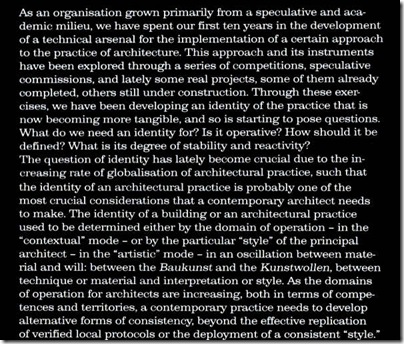- "Good design means not leaving traces of the designer,and not overworking the design,"
- He insists that his true strength is not in ideas, but rather in translating ideas into forms.
- Fukasawa's approach to designing electronic gadgets, based on over 25 years' experience, has been called "anti-technical" dispensing with unnecessary buttons, displays, and other high-tech signifiers. His Twelve watch for Issey Miyake, for example, radically removes the clutter that is supposed to signify "precision" in watches, instead relying on the shape of the face to provide the accuracy
of reading.
- Could you tell us more about your "Without Thought" philosophy of design?
People shouldn't really have to think about an object when they are using it. Not having to think about it makes the relationship between a person and an object run more smoothly. Finding ideas in people's spontaneous behavior and realizing these ideas in design is what Without thought is about.
- How did you develop this philosophy?
Designers often want to make something special, something that really grabs people's attention. But I realized that when we actually use these products, whether or not they are special is not that important. So I decided it would be a good idea to look at people's subconscious behavior instead-or, as I call this principle, "design dissolving in behavior." I realized then that design has to achieve an object‘without thought."
Design dissolves in behavior is about finding products beautiful not simply because of the way they look, but from the experience of interacting with them. With the Muji CD player, when the user pulls the string, the CD slowly starts spinning and then the music follows. If the switch was not this string but something else, the same feeling could not have been achieved. In other words, our behavior in using the object is dissolved within the design.
MUJI: 無印良品最早為日本西友公司的自有品牌,靈感來自日本Salson集團的堤清二和他的朋友設計師田中一光日常對話中提出的構想,是以對抗既有的「品牌」為主要概念。在當時同屬Salson集團的西武百貨和日本全家便利商店協助下,1983年在日本東京的青山開設了第一家店面。開幕之後市場反應良好,因此在1990年成為了獨立的公司「“株式会社良品計画”」。也在海外使用「MUJI」為品牌名稱設立據點。
截至2004年8月底,無印良品在日本共有132家分店,並有144處的經銷據點。海外部份在英國設立了15家分店、法國5家分店、愛爾蘭1家分店、香港5家分店、新加坡2家分店、韓國1家分店、台灣4家分店。
- I don't base my designs on any kind of formal research. I simply believe that through subconscious behavior we can integrate and live smoothly within our environment. However, there is one psychologist who has influenced me. James J. Gibson, who introduced the term "affordance" in the 1960s - affordance being the quality of an object that indicates to us how to interface with it. His philosophy comes quite close to my own way of thinking. I don't know how important research is to design in general, but for me designing is an intuitive process. But I am always interested in analyzing how I actually get these intuitive ideas for each design. Markets are different.
James J.Gibson:J.吉布森(1904-1979),美国实验心理学家,创立了生态光学理论。他反对知觉的认知加工理论,认为知觉是一种直接经验,它的一切信息都由外界物体的光学特性所提供。
- Design is always about creating the relationship between people, objects, and the environment. In this respect, whether you are designing a piece of furniture, a TV, or a mobile phone, there should be no boundaries in your way of thinking about and designing them. In fact, it's much more unnatural if you try to design a piece of electrical equipment as a piece of electrical equipment.
- How do you find the time to work on the huge number of projects you're involved in?
My office has eight assistants and myself. I don't intend to come up with ideas for each project from scratch-I find I naturally think about design all the time, so I store my ideas and use them at the right moment So, I don't really need to spend time on” generating ideas.
- You have said that good design depends on erasing the traces of the designer. How do you do this, and how does this fit with today's cult of the celebrity designer?
You erase your traces as designer by not asserting your own ideas. When the product synchronizes with its users, they feel as if they've found the product they were looking for all along. At that moment, the name of the designer of the product becomes irrelevant. I am not a celebrity designer, and I would not want people to enjoy the "signature" of myself as designer before enjoying my actual products. If users enjoy the products, the question of who designed them is relatively unimportant. Naturally, they may be curious about who designed it.
- What do you think are the traditional design strengths of Japan?
Harmony. Japanese people have a talent for harmonizing and for finding the appropriate answer through considering all the factors involved in a question. Call it minimalism. It doesn't necessarily involve using certain shapes, but it is about being appropriate
- Your work has been described as "things that don't exist, that should exist." How do you explain the visionary quality of your work?
It's simply about designing with an image in mind that everyone has in common.
- What is the biggest mistake that designers make?
Designing using only the subjective mind.
- What is your ambition as a designer?
To always produce good design and to continue designing.
- What inspires you?
Normal, everyday life




